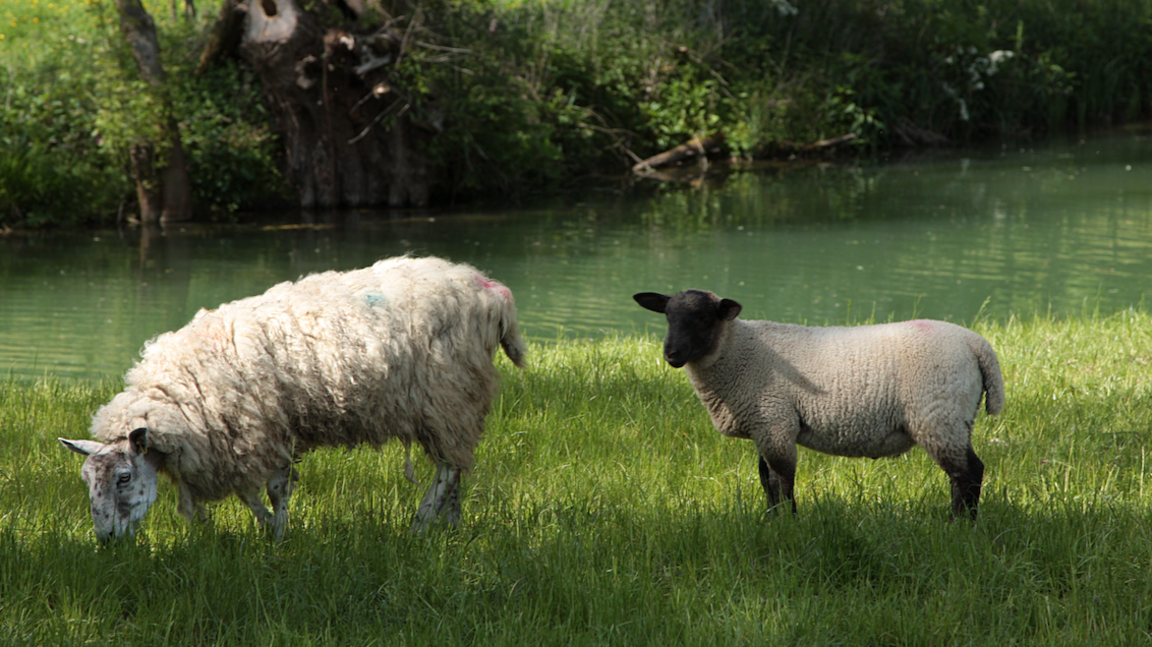How is climate change affecting Gloucestershire?
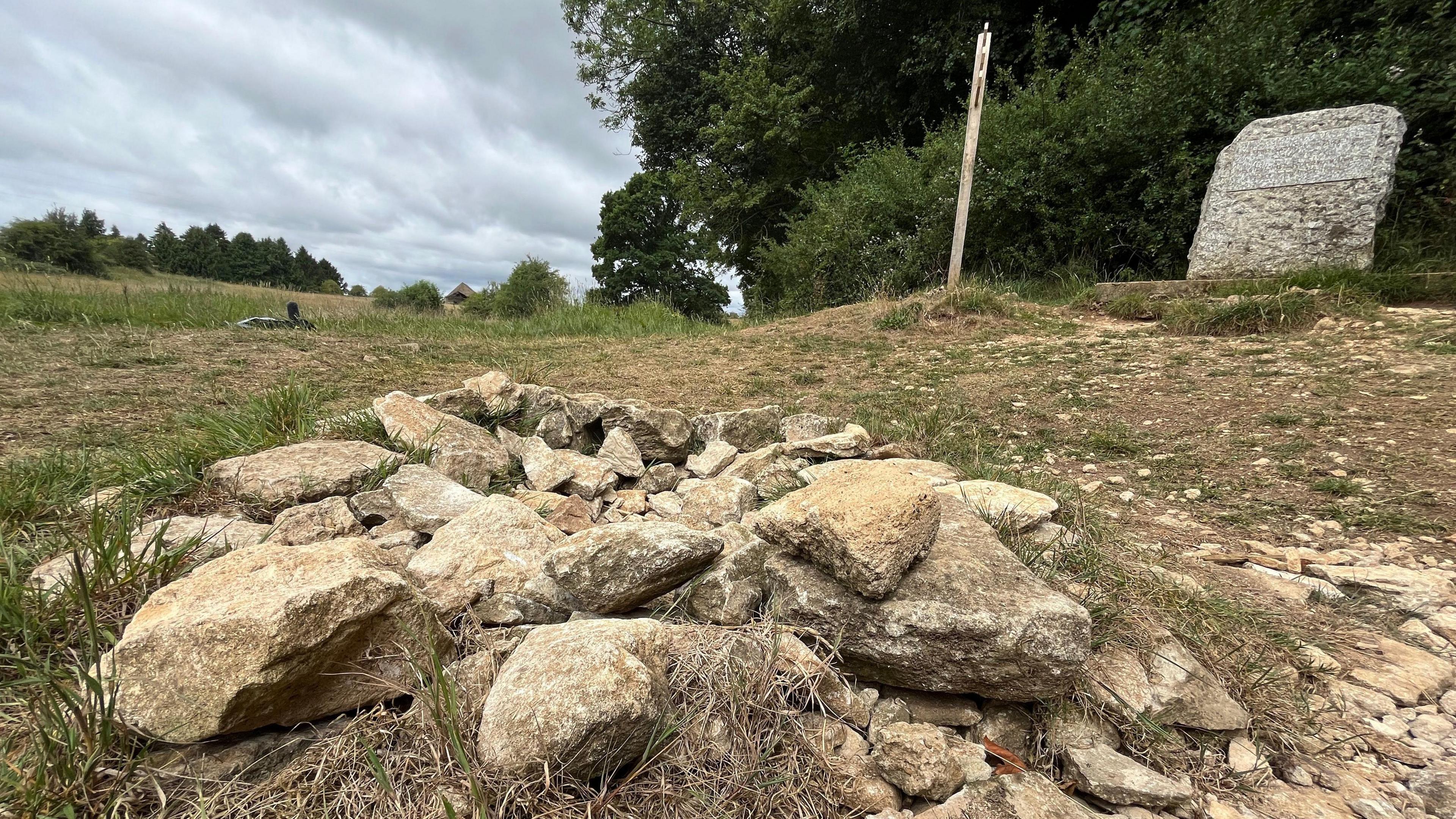
The source of the River Thames (pictured) is often dry at this time of year, but experts believe it is drying up more quickly then usual
- Published
Gloucestershire is the driest county in the West, with less rainfall then Wiltshire, Somerset and Bristol, Met Office statistics show.
And a particularly dry spring followed by a hot June has resulted in challenges for the county's agriculture and waterways.
That follows a wet winter, which caused farmers to lose thousands of pounds in crop yields.
Chris Short, professor of environmental governance at the University of Gloucestershire, said that, due to the effects of climate change, he was predicting unpredictability in the county and beyond.
Here we take a look at examples of how farms, rivers and vineyards are faring in Gloucestershire.
Crop failure
An incredibly wet period in autumn meant all the wheat crops that were sown at Blackhouse Farm in Newent were wiped out.
James Lowe, whose family have owned the farm since the 1950s, had to start again, opting instead to grow maize for animal feed.
The process cost him £30,000. "We came to the spring with practically no crops established," Mr Lowe said.
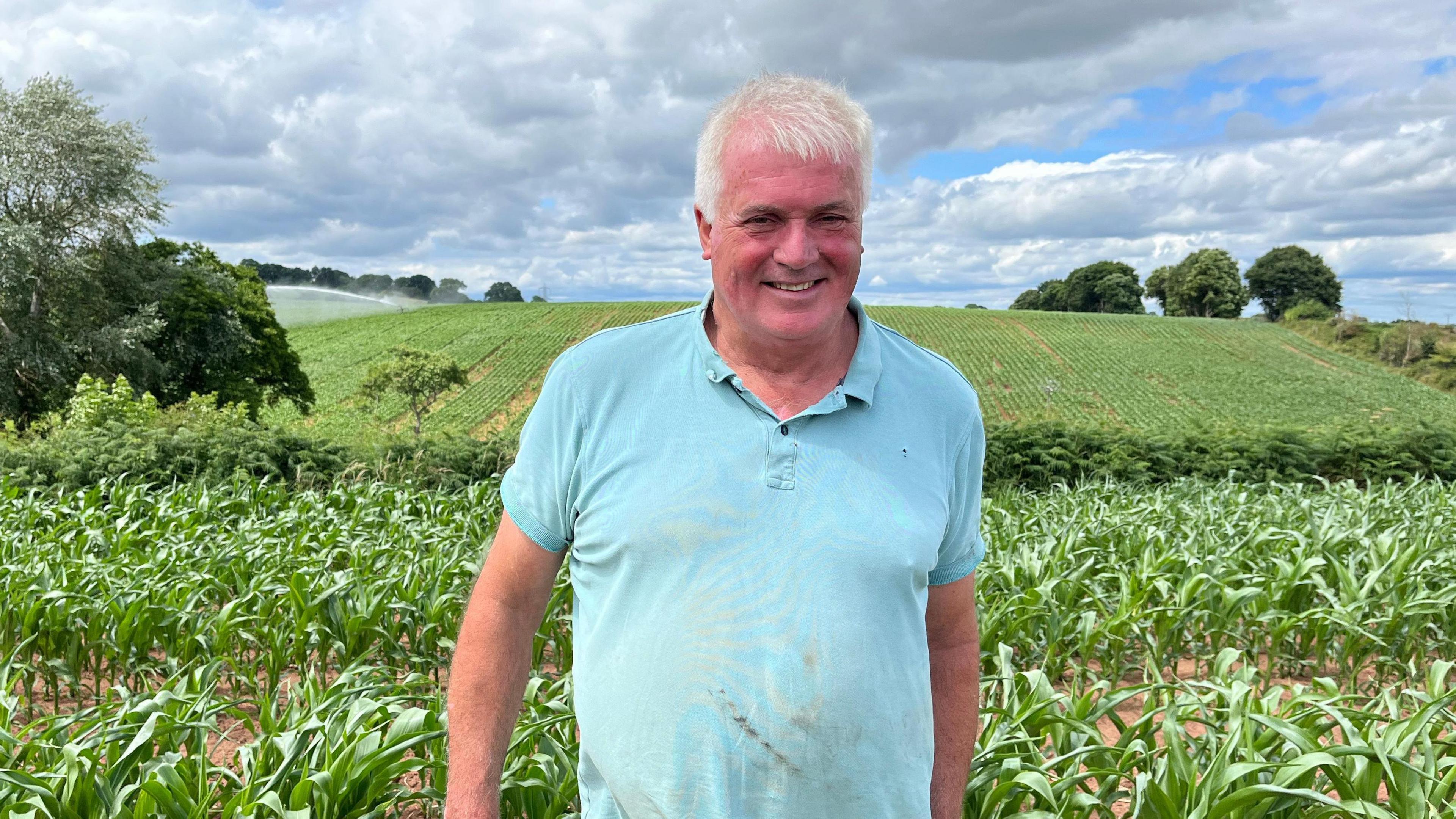
James Lowe, a farmer in Newent, lost his wheat crop in autumn and started again with maize
"It is becoming more tricky, all farmers feel they are slaves to mother nature – and you've got to work with mother nature, not fight her, because she will win every time," Mr Lowe said.
The farm has a water gauge that shows it has had only two spells of rain since the start of April, both about 0.4in to 0.6in (10mm to 15mm).
"We have to tailor our cropping depending on what situation arises, for example, we've ended up planting maize because it was the last option we had," he said.
Low rivers
Those monitoring the River Churn, a tributary of the Thames, have measured 10 million litres of water flowing every day.
For this time of year, the flow rate should be double that number, experts say.
"We've effectively had the driest spring on record for the Churn catchment and large parts of the Cotswolds," said hydrogeologist Dr Mike Jones.
The river is lower than it was in 2022, which was the last time the area experienced a significant dry spell and heatwave, Dr Jones said.
He added: "Ultimately later on in the year we ended up in a declared drought with temporary use bans.
"I don't want to give an alarmist view but that's the sort of situation we are in today on the Churn."
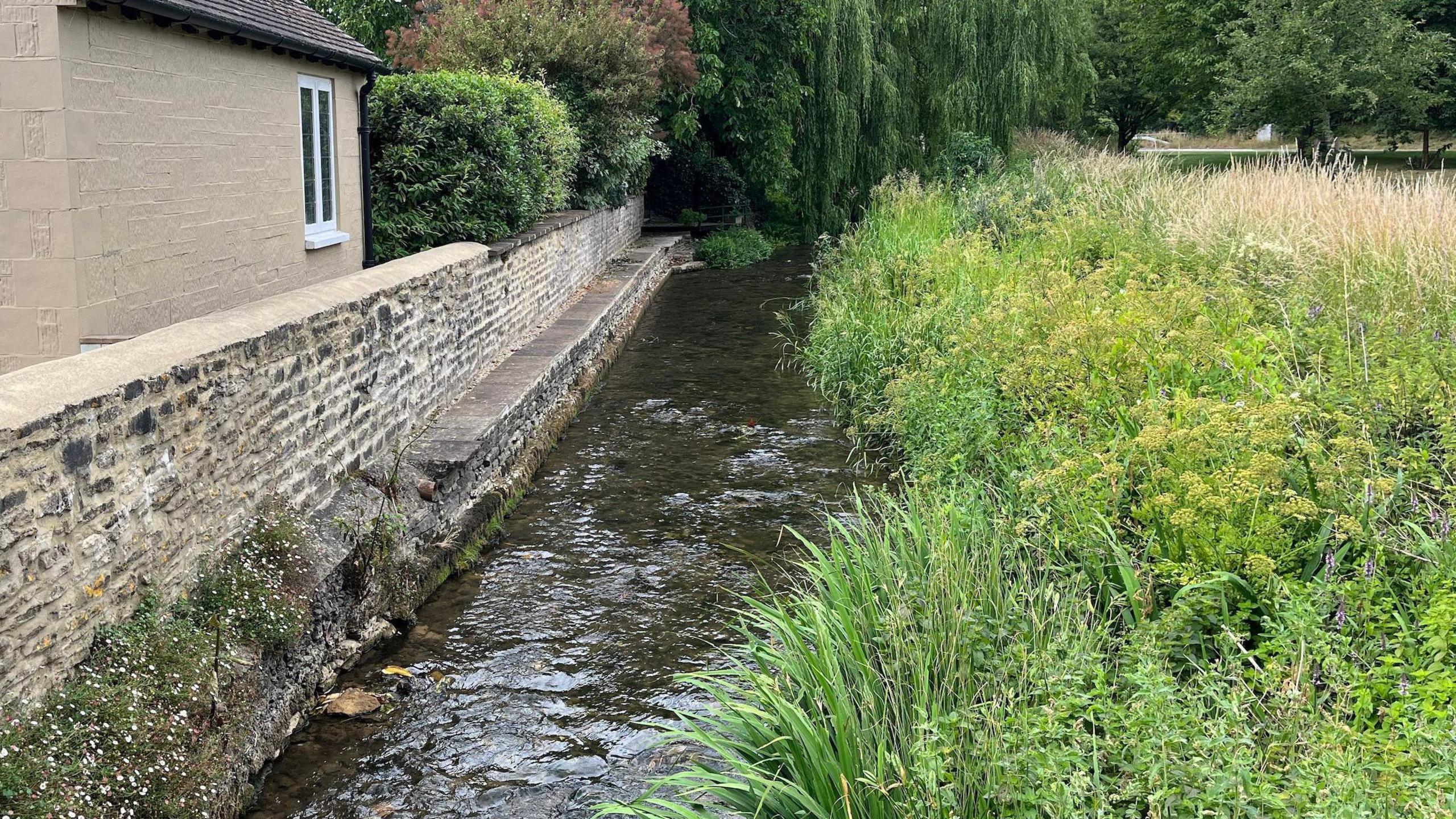
The River Churn in Cirencester is "low and slow" this summer
Dr Jones is also a member of the group Friends of the Gumstool Brook, an offshoot of the Churn.
The group has been trying to improve river flow into the stream, but given that the Churn in Cirencester has been recorded to have its "lowest and slowest flow this early in the year", it has been a difficult task.
Met Office statistics show that from April to June 2022, 4.8in (123mm) of rain fell in Gloucestershire – and only 3.1in (79mm) fell in the same period this year.
Boost for vineyards
Vineyards in Gloucestershire have had a particularly good year, with the dry weather and long sunny days helping bring the grapes on early.
It follows one of the poorest years last year with lots of rain – which was "disastrous" for the crop, said Martin Fowke, of Three Choirs Vineyard.
"We are flowering at the moment which is two weeks earlier than we would expect to be and that gives us a longer growing season and the opportunity for more ripeness," he said.
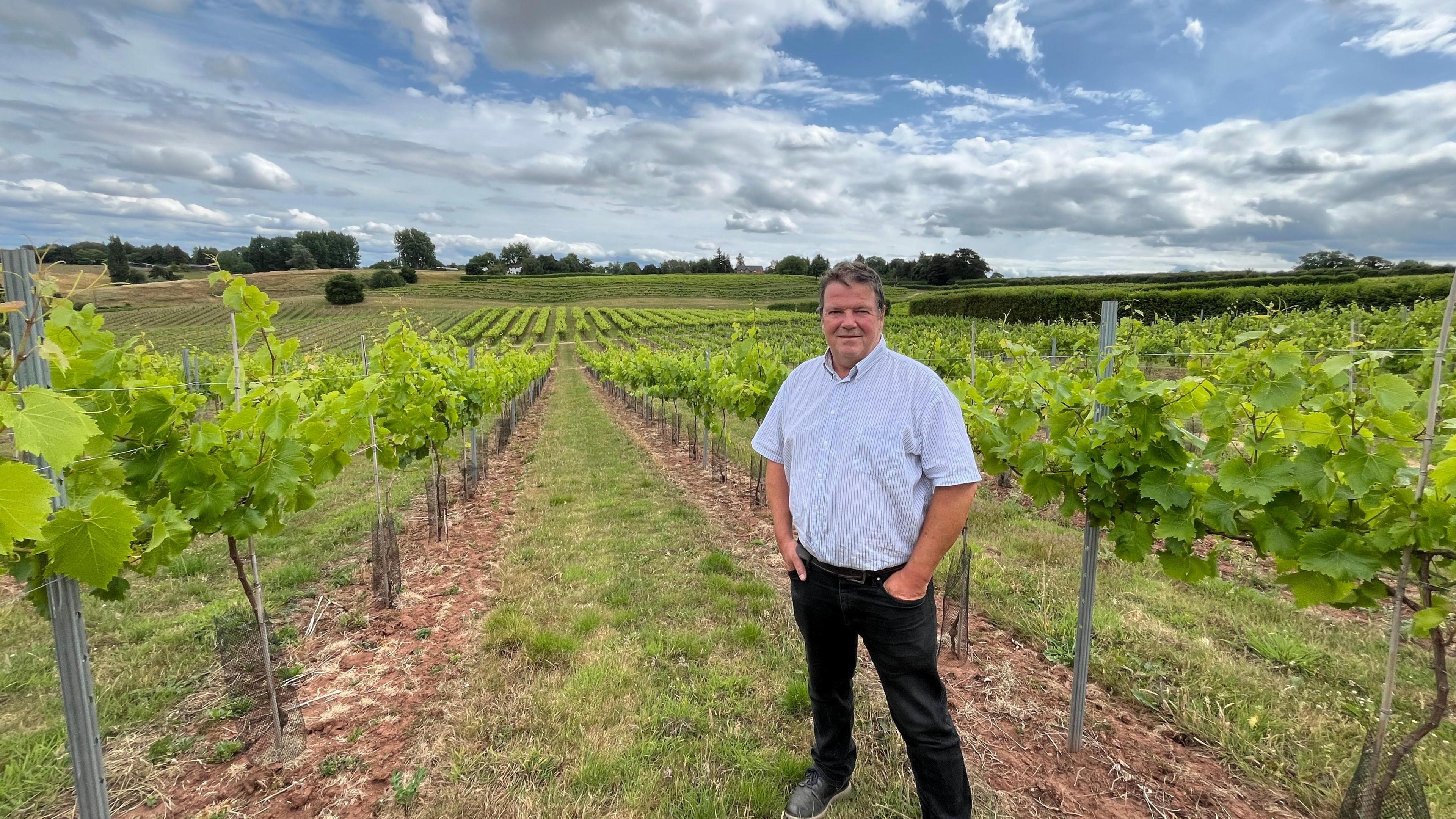
Martin Fowke of Three Choirs Vineyard has found it to be a promising season
Mr Fowke said he believed this year was drier than 2018, which was the most recent comparable year.
According to trade body WineGB, there are now 4,209 hectares of vineyards in the UK, with English wine said to contribute several billion pounds in economic activity annually.
Proposed solutions
So how do we change our environment in order to cope with the new weather patterns brought about by climate change?
Professor Chris Short, from the University of Gloucestershire, regularly speaks to farmers about the measures they can put in place to cope with higher temperatures in the summer and heavier rainfall in the winter.
He said: "The key thing they [farmers] are recognising is the one thing they can manage is their soil.
"They need their soil to be as healthy as possible so it can retain moisture for longer."
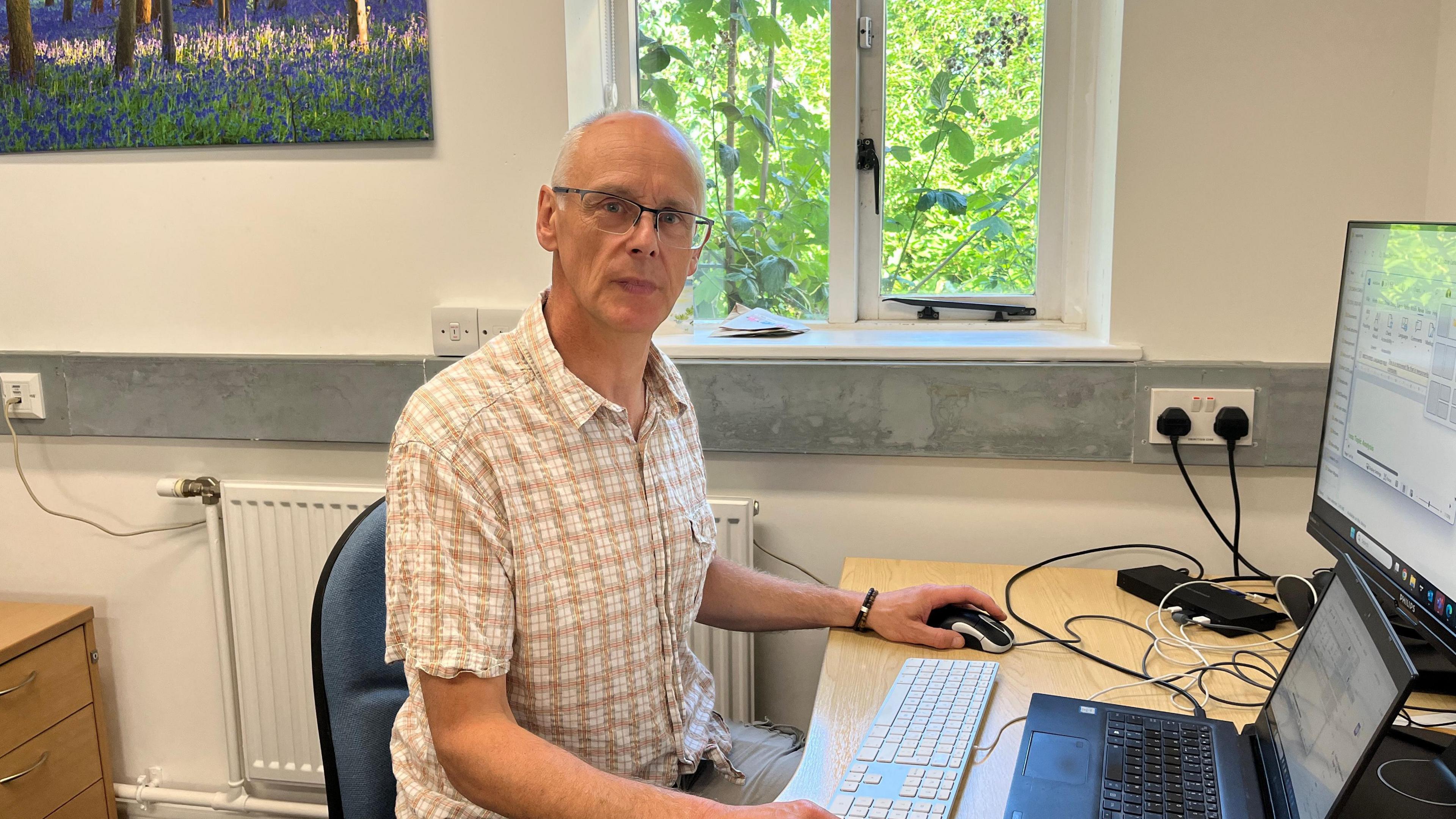
Professor Chris Short is working on ways that we can adapt to a changing environment
Professor Short has been looking at increasing soil health by diversifying crops, meaning a number of different crops are planted in the same field.
This not only makes soil healthier but gives farmers options should a crop fail.
There has also been research looking at shading crops under trees.
Planting more trees is an approach that has been suggested for urban areas too, although Professor Short said much more may need to be done besides.
"We have so much hard surface in our cities, if you have those very localised, very heavy rainfall events, whatever system you have in place isn't going to sustain that," he said.
The professor proposes use of green walls, green roofs and permeable surfaces to slow rain water down and reduce flash flooding.
"Several people have commented maybe this is the new norm: we can predict it's going to become unpredictable," he said.
Get in touch
Tell us which stories we should cover in Gloucestershire
Follow BBC Gloucestershire on Facebook, external, X, external and Instagram, external. Send your story ideas to us on email or via WhatsApp on 0800 313 4630.
- Published30 June
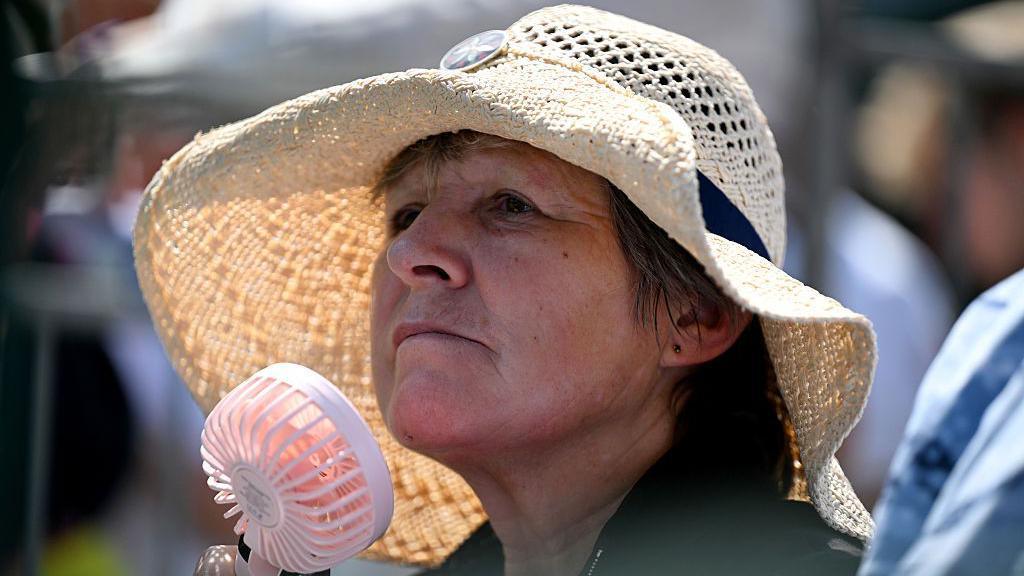
- Published9 June
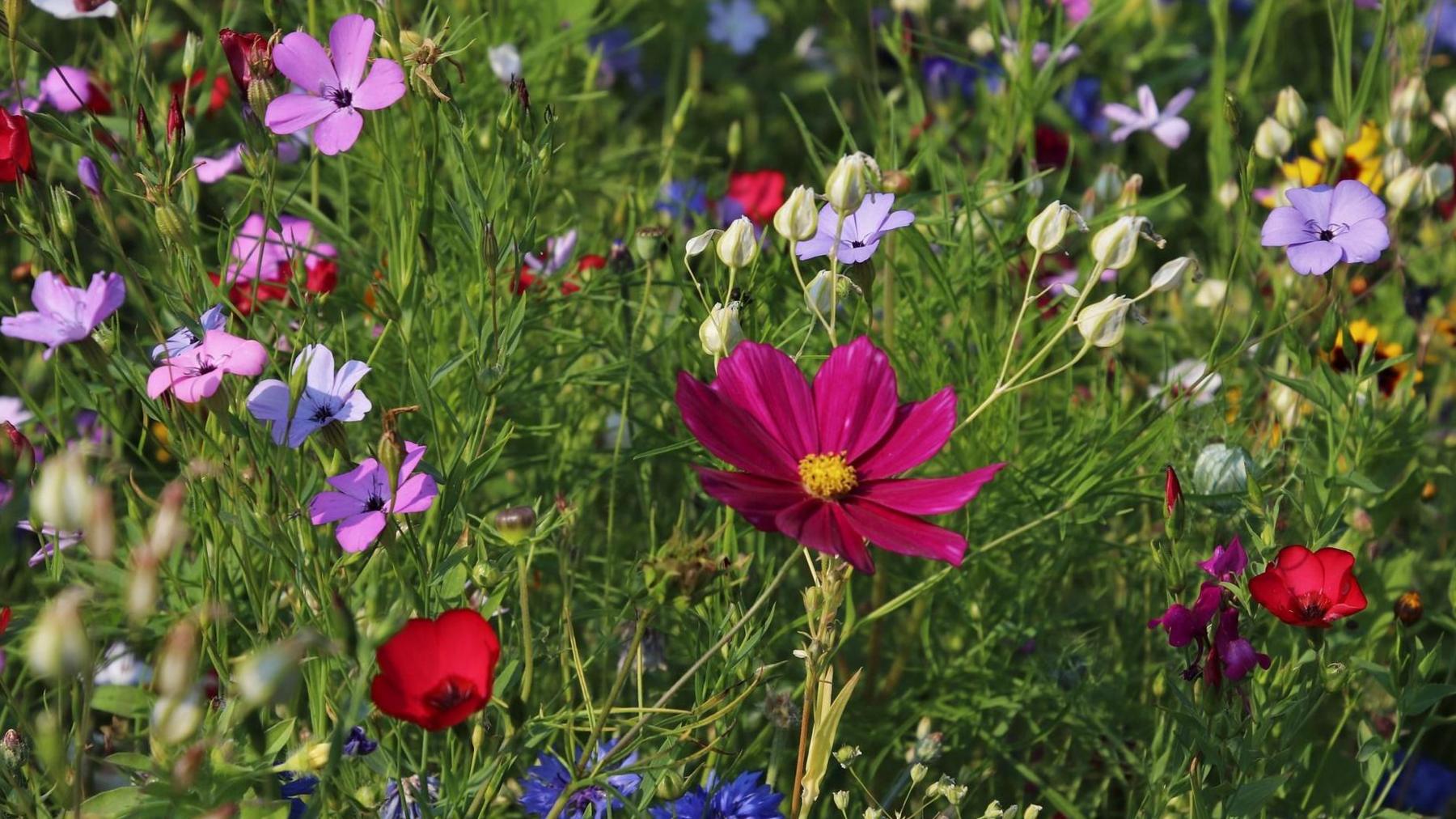
- Published27 October 2024
